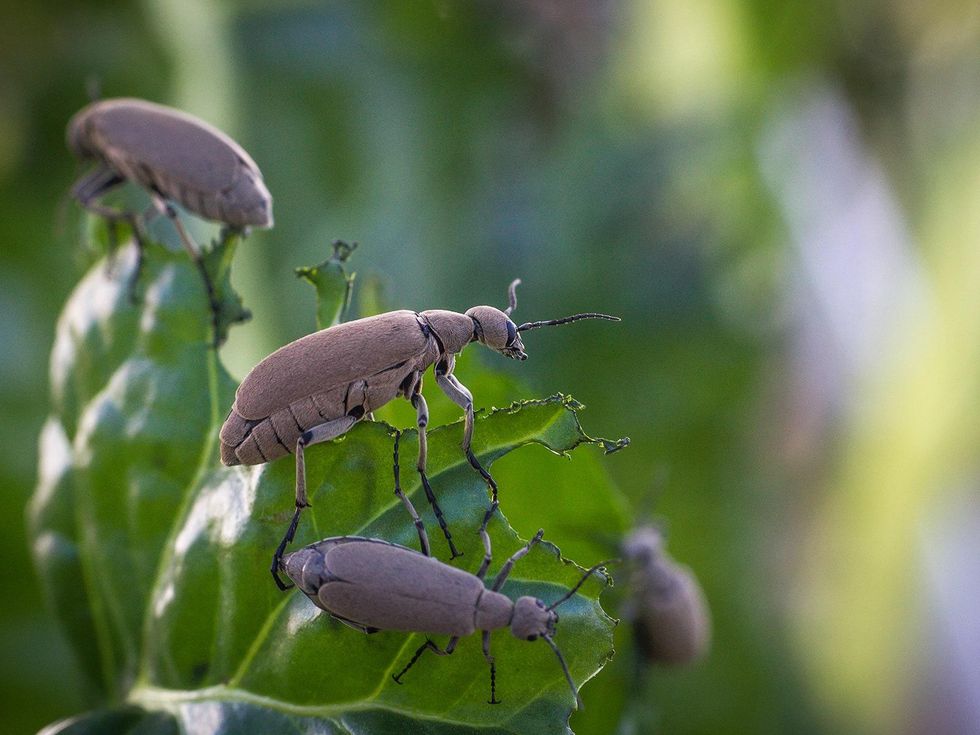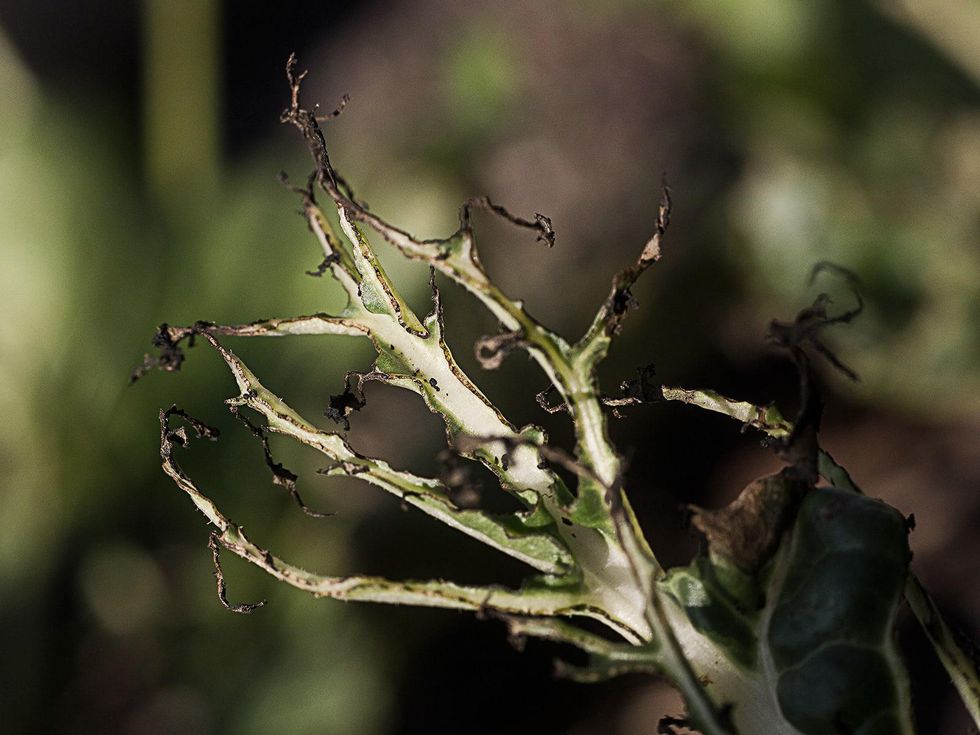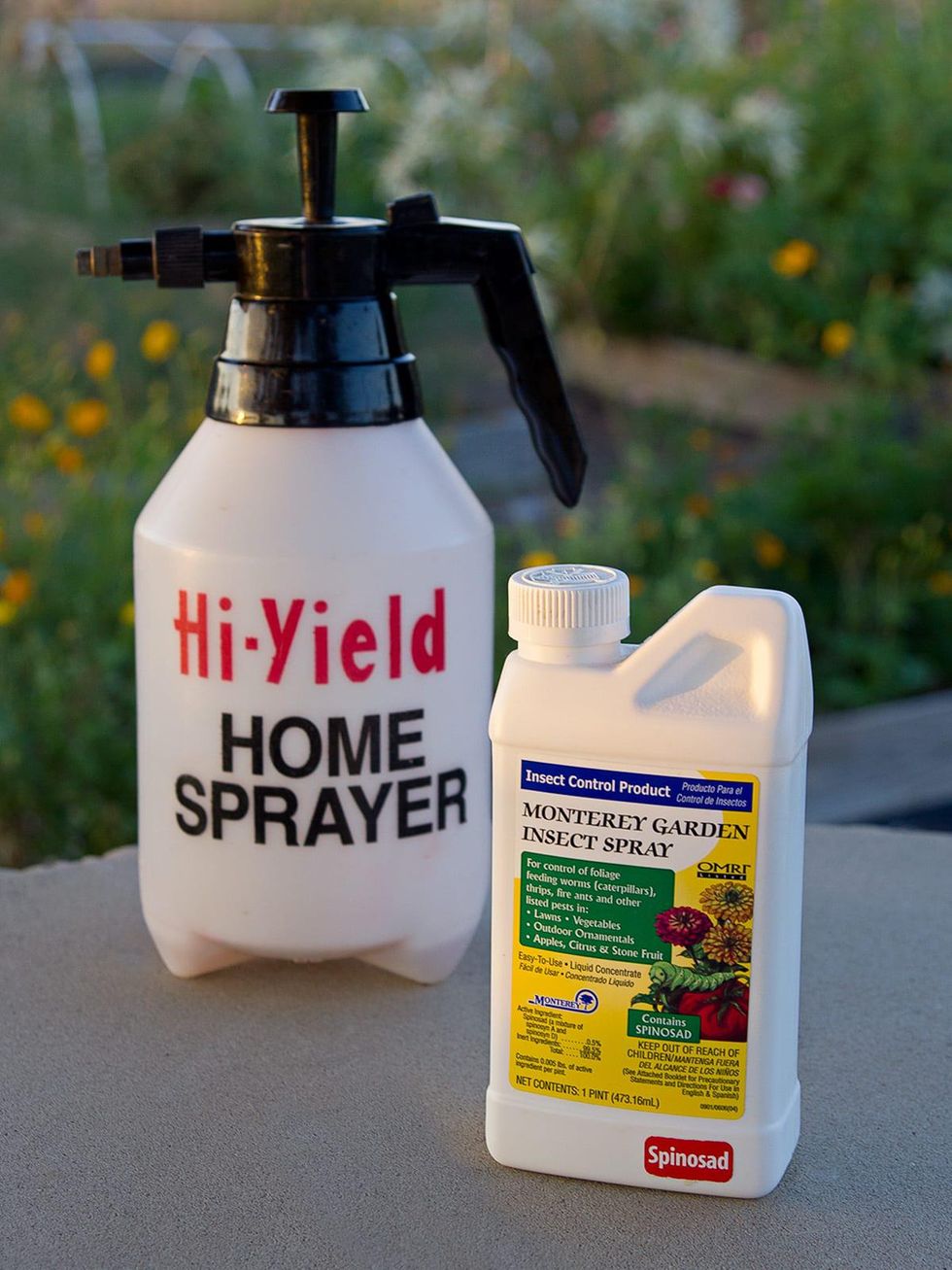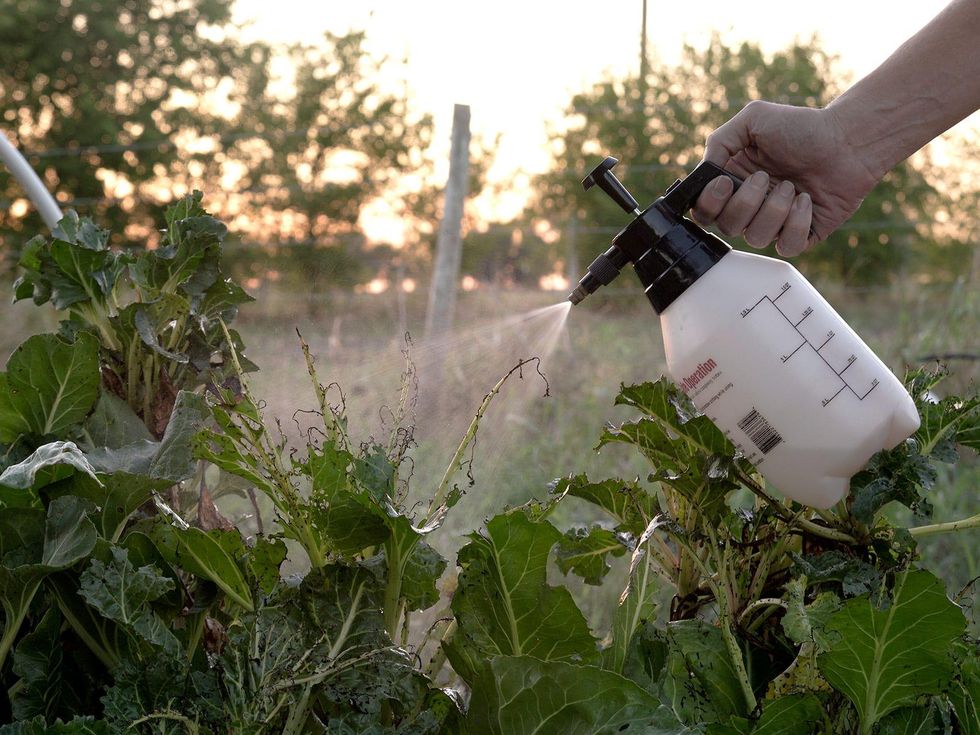The Farmer Diaries
North Texas farmer steps in to rescue Swiss chard from tiny assailants
Since I first began my journey to opt out of industrialized agriculture by starting my own sustainable vegetable garden, Swiss chard has given me a continuous supply of healthy greens.
Nothing deters it — neither summer heat nor frost. It has survived drought, neglect and grasshopper plagues. After hard freezes wither the leaves, it bounces back with fresh, young shoots. While other crops come and go with the seasons, Swiss chard keeps on producing. It even reseeds itself without my involvement, like a weed, which has ensured that whether I intended for it to grow or not, there's always a robust supply.
By the first day of fall 2013, my garden included three beds of beautiful Swiss chard in several varieties: Fordhook, Five Color Silver Beet, Ruby Red, Bright Lights. But a week later, I discovered that the Swiss chard beds had been decimated. Almost all the leaves had disappeared overnight. The scene looked as if fire had burned off the foliage and singed the stems.
Some pests, even grasshoppers, will often damage only a portion of a plant and leave the rest for harvest. Blister beetles methodically devour the best part of Swiss chard.
As I stepped closer, I heard a noise similar to muted sizzling, or perhaps suds popping in soapy water. It was the sound of thousands of leaf-devouring insects chomping down on what bits of plants remained. Black, thread-like strands of digested plant matter covered the disfigured plants.
Upon close inspection, I spotted the culprit. There, among the gnarled stems, were blister beetles. An inch long, light brown-gray, soft bodied, with black stripes on their segmented abdomen, they clung to the skeletonized plants, about a dozen on each plant. Their appetite was so voracious, their consumption so rapid, that I could see sections of plants disappearing as I watched.
Some pests, even grasshoppers, will often damage only a portion of a plant and leave the rest for harvest. Blister beetles, though, methodically devour the best part of Swiss chard. They prefer the delicate new leaves that emerge from the center of the plant, and they stop eating wherever the stem of each leaf is too tough to chew easily.
Bands of skunks had kept grasshoppers, squash bugs and other pests under control in my garden, but not this blister beetle infestation. Apparently, the beetle gets its name from its defensive secretions that can cause lesions on sensitive skin. I didn't know about this until I read it. The skunks knew; they left them alone.
Choosing your weapon
Protecting what remained of my Swiss chard crop was up to me, then. Of all the methods of control available, I chose to spray my plants with Monterey Garden Insect Spray, an organic insecticide with Spinosad as the active ingredient.
Spinosad is derived from soil bacteria and is very specific in what pests it controls. Leaf-eating insects ingest Spinosad and stop eating immediately. Ladybugs, spiders, praying mantises, and other predatory or beneficial species are unharmed — except for bees, which are sensitive to almost everything. Spinosad is nearly non-toxic to humans and wildlife.
What's more, Spinosad loses its toxicity with hours of application. By the next day, it would be inert.
I prepared to spray the pests that day, but to avoid harming the bumble bees that had taken up residence among beds of zinnias, I waited until sundown when the bees went to bed and the air was still.
Eradication is never the solution for pests; the farmer is better served by methods of pest control that reduce crop loss without causing damage to the ecosystem upon which all life depends.
I mixed the spray with water to make a solution as directed by the product label. I used a home sprayer with the nozzle opened to make droplets instead of a cloudy mist so that I could better control what was hit and what wasn't. Each plant I sprayed thoroughly, especially the center where the new leaves pop up and out. A few of the beetles jumped off the plants as I sprayed; they do that even if I wave my hand nearby. But as for immediate results, I saw no difference.
The next day, I inspected my Swiss chard beds and found that some plants were free of the beetles, but some were just as infested as before I sprayed, though I could not determine if they were eating the leaves. Although the directions said to wait three days to evaluate the spray's effectiveness, I freaked out and hit them once more with the mix, again at sundown.
On day three, I found very few beetles on the plants. Interestingly, there were no dead beetles either; they seemed to have fled. Their numbers had been reduced by about 90 percent. All signs were promising.
By day four in all three beds, I found only one remaining beetle, which flew away as soon as I discovered it. Tiny new leaves of Swiss chard had even begun to emerge from the center of several plants. It looked as if I were in the clear.
Day five: A morning inspection of the Swiss chard beds revealed no blister beetles in sight. Monterey Insect Garden Spray with Spinosad was effective. As if to demonstrate its safety for beneficial insects, I spotted two lady bugs on the plants I sprayed, apparently unharmed and healthy.
I could have used diatomaceous earth, a form of silica that kills all insects and spiders that crawl through it, or a spray with pyrethrin as the active ingredient. Both are organic, but both indiscriminately harm or kill every insect they contact. Pyrethrin is also toxic to humans and wildlife, therefore I do not consider it an option (unlike the City of Dallas, which uses a stronger form when crews spray for mosquitoes).
Of course, I could have prevented the whole infestation in the first place by covering the beds with an insect barrier cloth. I was caught unaware, even complacent this year, because I had covered my crops last year and never had a problem with the beetles. My recent experience will serve as a reminder next August to bring out the row covers in advance.
I refuse to use harmful, synthetic pesticides because of the harm they cause to insects, birds, animals and humans. I also avoid organic pesticides. Although they're safer, they still disrupt the ecosystem. Blister beetles may eat plants as adults, but in younger stages of their life cycle, they are beneficial insects that eat grasshopper eggs — they're a part of the balance of nature that controls grasshoppers. We actually need blister beetles, so I prefer to leave them unharmed.
This friend-foe duality seems common in the insect world and presents a strong case against modern agriculture's mission to eradicate any species that can cause crop loss. Eradication is never the solution for pests; the farmer is better served by methods of pest control that reduce crop loss without causing damage to the ecosystem upon which all life depends.
We're interjecting our crops into the middle of a world of insects, animals and plants that have their own ebbs and flows of balance. To expect nature's reward without enduring occasional loss is unrealistic at best, hubris at worst.




